Related Research Articles
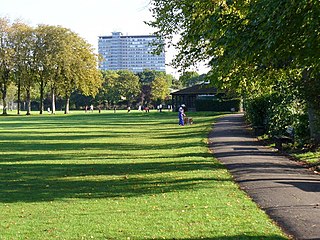
Tolworth is a suburban area in the Surbiton district, Royal Borough of Kingston upon Thames, Greater London. It is 11 miles (17.7 km) southwest of Charing Cross. Neighbouring places include Berrylands, Chessington, Epsom, Ewell, Hinchley Wood, Kingston, Long Ditton, New Malden, Surbiton and Worcester Park. Surbiton is the nearest, about a mile to the northwest. Tolworth is divided in two by the A3 Kingston Bypass and is situated slightly north of the Greater London-Surrey border.

The Post Office Rifles was a unit of the British Army formed in 1868 from volunteers as part of the Volunteer Force, which later became the Territorial Force. The unit evolved several times until 1935, after which the name was lost during one of many reorganisations.

Slade Green is an area of South East London, England, within the London Borough of Bexley. It lies northeast of Bexleyheath, northwest of Dartford and south of Erith, and 14 miles (23 km) east-southeast of Charing Cross.
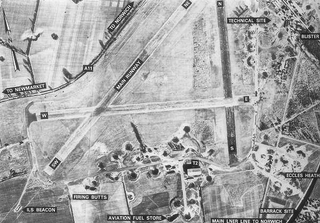
Royal Air Force Snetterton Heath or more simply RAF Snetterton Heath is a former Royal Air Force station located south east of the A11, 6 miles (9.7 km) south west of Attleborough, Norfolk, England.

Greenfield is a village in the community of Holywell, Flintshire, north-east Wales, on the edge of the River Dee estuary. At the time of the 2001 census it had a population of 2,741, which remained unchanged in the 2011 census.
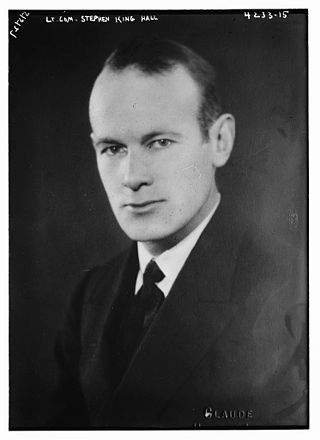
William Stephen Richard King-Hall, Baron King-Hall of Headley was a British naval officer, writer, politician and playwright who served as the member of parliament for Ormskirk from 1939 to 1945.

Bradshaw Gass & Hope is an English architectural practice founded in 1862 by Jonas James Bradshaw. It is Bolton's oldest architectural practice and has exhibited archive drawings in London and Manchester. The style "Bradshaw Gass & Hope" was adopted after Bradshaw's death to incorporate the names of the remaining partners, John Bradshaw Gass and Arthur John Hope. As of 2022, the firm continues to operate from offices in Bolton.

The QF 3-inch 20 cwt anti-aircraft gun became the standard anti-aircraft gun used in the home defence of the United Kingdom against German Zeppelins airships and bombers and on the Western Front in World War I. It was also common on British warships in World War I and submarines in World War II. 20 cwt referred to the weight of the barrel and breech, to differentiate it from other 3-inch guns. While other AA guns also had a bore of 3 inches (76 mm), the term 3-inch was only ever used to identify this gun in the World War I era, and hence this is what writers are usually referring to by 3-inch AA gun.
26th (London) Anti-Aircraft Brigade was an Air Defence formation of the British Army during the Second World War. It defended London during the Blitz.

The Leeds Blitz comprised nine air raids on the city of Leeds by the Nazi German Luftwaffe. The heaviest raid took place on the night of 14/15 March 1941, affecting the city centre, Beeston, Bramley and Armley. The city was subjected to other raids during the Second World War, but they were relatively minor; only the March 1941 raid caused widespread damage, including to the city's museum and its artefacts.
30th (Surrey) Searchlight Regiment was an air defence unit of Britain's Territorial Army from 1924 until 1961. During World War II it served in The Blitz and later in the Tunisian and Italian Campaigns, while detachments from the regiment served in the Far East and were captured at the Fall of Singapore.
London District Signals was a headquarters signal unit of the Royal Engineers (RE) and later Royal Corps of Signals in Britain's Territorial Army from 1908. It served with a corps headquarters at Gallipoli and on the Western Front during World War I, and later became an air defence signal unit during World War II. Its successor unit continues in the Army Reserve today.
The Essex (Fortress) Royal Engineers was a volunteer unit of Britain's Royal Engineers formed to defend the Essex coast. It served in this role in World War I and then converted to a searchlight regiment for air defence in World War II. The unit ended the war as a garrison infantry battalion. Its descendants continued to serve in the Territorial Army until 1955.

The 1st Devonshire Engineer Volunteer Corps, later the Devonshire Fortress Royal Engineers, was a volunteer unit of Britain's Royal Engineers whose history dated back to 1862. The unit helped to defend the vital naval base of Plymouth, and supplied detachments for service in the field in both World Wars. During the North African campaign in the Second World War, the unit's sappers distinguished themselves in bridging the Nile and clearing minefields during and after the Second Battle of El Alamein. Their successors served on the postwar Territorial Army until 1969.

The 71st Searchlight Regiment, Royal Artillery was an air defence unit of Britain's Territorial Army (TA), which was raised just before the outbreak of World War II and served as part of Anti-Aircraft Command during and after the war.
The 1st Cinque Ports Artillery Volunteers was a part-time unit of the British Army's Royal Artillery from 1860 to 1956. Raised as coastal defence artillery, the unit later served as field artillery in Mesopotamia during World War I, and as anti-aircraft artillery during the Blitz and in the Middle East during World War II.

The Iverna Gardens drill hall is a military installation in Kensington, London.
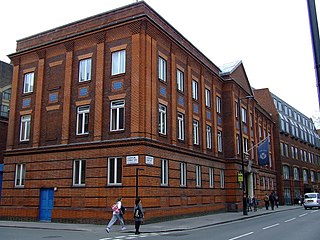
The Horseferry Road drill hall was a military installation at 95 Horseferry Road, London.
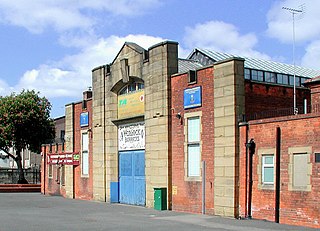
Wenlock Barracks is a military installation on Anlaby Road in Kingston upon Hull, England.
References
- ↑ "Forestry Memories - Document 5879" (PDF).
- ↑ "Industrial Museum: Horseferry Road, London. Revised detail of main entrance (drawing number 38). Scale: 1 inch to 2 feet. Office of Works, Storey's Gate, London". The National Archives . 1914.
- ↑ "Industrial Health and Safety Centre, Horseferry Road: temporary use by Anti-Aircraft Signal Company; works incidental to re-instatement of Home Office Industrial Museum, 1923-1933". The National Archives.
- 1 2 3 "THE INDUSTRIAL HEALTH AND SAFETY CENTRE". The Journal of the Royal Institute of Public Health and Hygiene. 18 (5): 134–136. May 1955.
- ↑ "Grace's Guide - Home Office Industrial Museum 1927".
- ↑ "Home Office Industrial Museum 1934".
- ↑ "Industrial Museum, Horseferry Road". Hansard . 21 October 1943.
- ↑ "Industrial Health and Safety Centre, Horseferry Road". Hansard. 6 May 1980.
- ↑ "Drill Hall Register: A list of the locations of London Drill Halls since 1908" (PDF). Retrieved 24 January 2025.